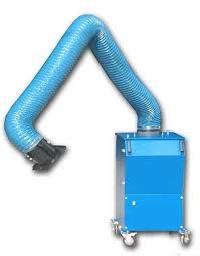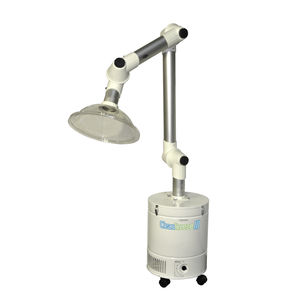
This is not considered a safe nor effective practice. If you don’t have a self-cleaning system withing the fume extractor unit, these filters have to be manually cleaned, which is done by removing the filter and using compressed air to separate the fume particles from the pleat. When the filter is needing to be cleaned, it means all of the weld fume particles have settled into the pleated material of the filter. Sometimes, the vacuum unit does not provide equipment to clean the filter, so in order to clean the filter it must be removed and done manually. Often, they can last up to a year in service life. These types of fume extraction systems with self-cleaning filters are able to be used multiple times before needing a replacement.

#Fume extractor full#
When the filter membrane is full by being packed with dust, you simply replace the filter with a new one.Īnother approach is using a cleanable filter, where you collect the particles into a membrane, clean it by pushing the particles down to a collection bin – either with a wand (pictured) or an automatic filter cleaning mechanism with the fume extraction unit, then collect the particles at the collection bin to dispose of either through landfill waste or recycling.

One approach is having a filter that is replaceable where the particles collect on the filter membrane itself. The particles that are collected into a fume extraction unit can be disposed of in two different manners. If you use an extraction system, for instance, that uses four ports, make sure your equipment requirement matches the capacity of the unit so it’s still providing the right amount of static pressure for each fume extraction gun. These will usually feature more powerful motors and bigger filters that can handle more than one fume gun at a time.
#Fume extractor portable#
But, if you weld with a TIG torch, or wish to utilize smoke extraction is a robotic application, there are funnels, boots kits, or other attachments that can be used to fit to a fume extraction system in order to collect fumes at the source.īasic fume extraction systems are made just for one welding gun, but there are some portable systems equipped for more than one torch. The most common use for a fume extraction unit is to connect to a fume extraction welding gun.

You can use a fume extraction unit with a funnel or other kind of extraction kit to sit next to a non-source capturing welding or grinding application, but many are designed specifically to deal with source capture welding, where you use an accompanying fume extraction welding gun to weld and extract fumes at the same time with the same tool.Įxtraction units connect to any kind of properly fitted extraction hose kit to bring you as close as possible to the type of air pollution you are trying to capture. These industrial designed systems use specific blowers to get the very high static pressure you need to work with a welding torch.įume extraction systems are used for all kinds of processes that create smoke in an industrial environment. A turbine within the unit spins at a rapid rate to create the power needed to collect fumes while the welder’s welds with the torch. The unit create vacuum pressure using a motor/blower like in a shop vac. From a functional standpoint it is a simple system.

The inner housing of a fume extraction system has a filter and a motor that creates negative static pressure.


 0 kommentar(er)
0 kommentar(er)
